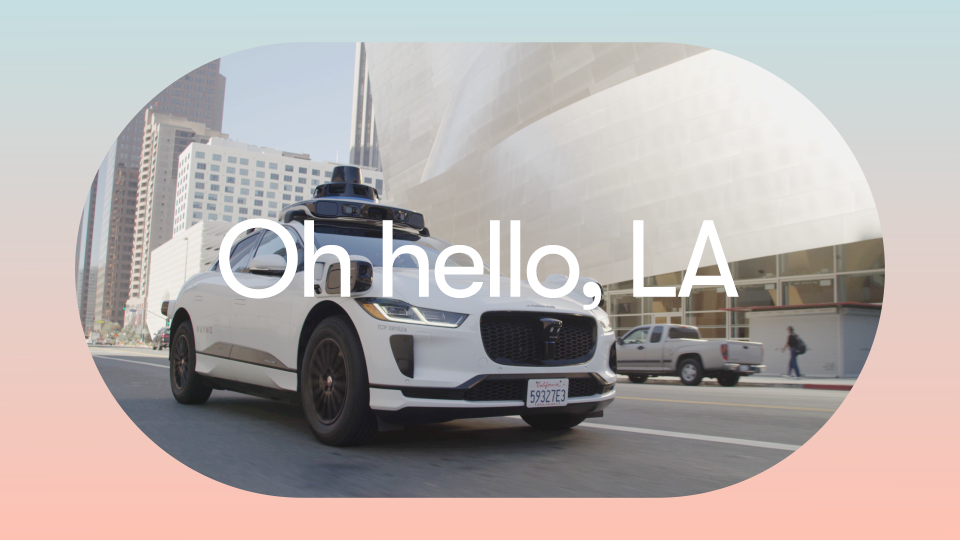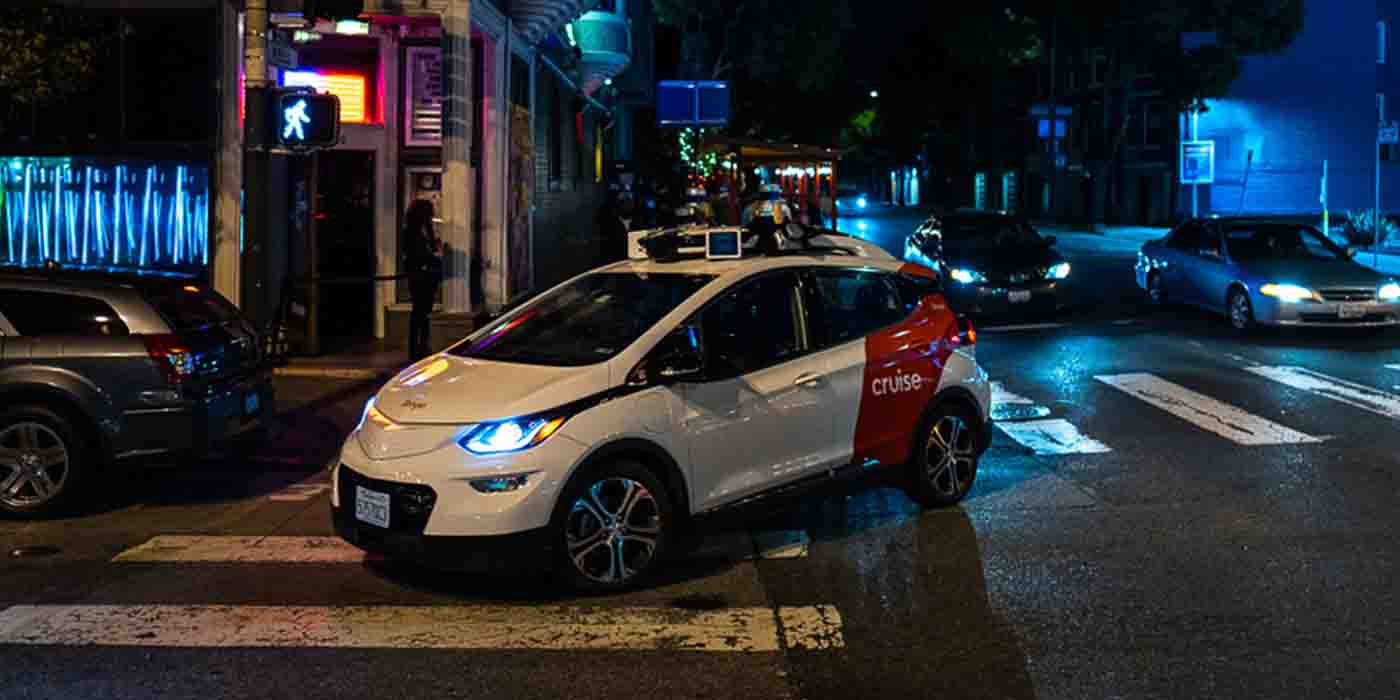Waymo will expand robotaxi operations to LA next

Google’s Waymo driverless ride-hailing service is expanding operations to Los Angeles, California.
Expand Expanding Close
Google’s Waymo driverless ride-hailing service is expanding operations to Los Angeles, California.
Expand Expanding Close
GM Super Cruise drivers are the most likely to engage in distracted driving behaviors while using partial-automated driving software when compared to Tesla Autopilot and Nissan ProPILOT drivers, according to a new study by IIHS.
Expand Expanding Close
General Motors’ self-driving rideshare service Cruise announced that it has recalled 80 of its electric robotaxis in order to update their software following an accident in June that injured two people. The NHTSA stated that the software issue caused the self-driving Cruise vehicles to “incorrectly predict” oncoming vehicle’s paths, adding risk for collisions.
Expand Expanding Close
Imagine a not so distance future where you’re sitting in your electric vehicle (something truly luxurious since you’re so successful in the future), and you’re looking back on this list below and comparing predictions to your current world. You sip your ketone-infused coffee and take a bite of your zero-carb croissant while you answer emails using your glasses. In this future your vehicle is doing all the driving for you, so you can focus on your breakfast and the latest Electrek news. Look at you … crushing it. This autonomous-vehicle future may not be so far away (and will likely arrive before a zero carb croissant, to be honest), but which countries are making the most moves to support autonomous vehicles? A study by confused.com offers a comprehensive list below.
Expand Expanding Close
Toyota Motor Corporation has resumed operations of its self-driving e-Palette pods at the 2020 Paralympic Games in Tokyo after a halt last Thursday following a collision with a visually impaired athlete. Working alongside the Paralympic Committee, Toyota will make several safety improvements, both inside and out of its vehicles.
Expand Expanding Close
Toyota Motor Group Subsidiary Woven Planet has announced the completed acquisition of Level 5, the self-driving division of rideshare veteran Lyft, Inc. The completed transaction is one of several made by Toyota and its subsidiaries in 2021, specifically pertaining to autonomous software and other self-driving technologies.
Expand Expanding Close
The Volvo brand is all about safety. Today the company announced that it will equip its next-generation vehicles with lidar, an expensive sensor that has almost entirely been reserved for fleet-based robotaxis — not passenger cars. Tesla rejected lidar entirely. But Volvo believes lidar’s robust capabilities can be applied to millions of vehicles for hands-off highway driving.

NVIDIA has unveiled what they call the “world’s most advanced processor” for use in autonomous vehicles and robots. The new NVIDIA DRIVE AGX Orin chip can perform 200 trillion operations per second, which is almost seven times as many as NVIDIA’s previous Xavier chip (30 trillion operations) and more than Tesla’s FSD Computer (144 trillion).

Ford announced that it has acquired Quantum Signal, a mobile robotics defense contractor, to aid with its self-driving car development.

Lidar startup Luminar announced today that it’s received $100 million in new funding, as the company also introduced Iris, an autonomous platform that it expects to bring to production vehicles by 2022 — for less than $1,000.

Hyundai has teamed up with Yandex, Russia’s largest technology company, to jointly develop self-driving cars.

Outside of the tech community, self-driving technology is still seeing a lot of pushback from people who don’t trust computers driving a car for them.
A new video released by Alphabet’s Waymo does a great job to familiarize people with the technology.
Expand
Expanding
Close

California has been one of the most forward-thinking states when it comes to self-driving vehicles by enabling test programs on public roads early on.
But those vehicles need to have someone in the driver’s seat at all times and be ready to take control.
Now, new DMV regulations this week approved the use of fully self-driving cars as soon as April.
Expand
Expanding
Close

The “Self Drive Act” (H.R. 3388), which sets new federal self-driving car measures, is smoothly going through the legislative process with apparent bipartisan support.
It was unanimously approved by the U.S. House today.
Expand
Expanding
Close

While reports of Apple’s work on electric and self-driving cars have been surfacing for years, CEO Tim Cook has been careful about not confirming or denying any detail.
But he now makes rare comments on Apple’s effort in developing self-driving cars, which he referred to as “a core technology” for the company.
Expand
Expanding
Close


A new article in the May edition of Transportation Research took up the question of how much, if anything, consumers would pay for autonomous driving capabilities in their vehicles. The survey of 1,260 American households concluded that the average household would be willing to pay $3,500 for partial automation, or $4,900 for full automation.
There was a lot of variance in the data however, as several households said they would pay upwards of $10,000 for full automation, and others said they would not be interested in paying a premium at all for this technology. The research also concludes that because of this large variance in consumer price preferences, there will be plenty of room for vehicle models with varying levels of automation at various price points.


There are a lot of companies now working on autonomous driving technologies and as many approaches to achieve the ultimate goal of a safe fully self-driving system. With such a transformative technology, there will be an extraordinarily important first-mover advantage.
Navigant Research attempted to create a leaderboard based on each company’s vision and execution in order to get an idea of which ones might have a lead. It published the report this week with interesting results.
Expand
Expanding
Close


Uber has been under a lot of pressure over the past few months from several different angles, including with their self-driving effort. They had problems with regulators in California after a self-driving prototype ran a red light and now they are being sued by Waymo, Alphabet’s self-driving car company, over their lidar sensor technology.
Now one of their self-driving prototypes in Arizona was involved in an accident that resulted in the car rolling over. Fortunately, no one was injured.
Expand
Expanding
Close


Tesla has so far been mostly alone in the autonomous driving world trying to achieve fully self-driving capability using a camera-based system. That’s because almost all other company developing self-driving technology are focusing on lidar sensors.
It’s about to change. A new startup in the field is now trying a similar albeit even more radical approach to self-driving with a camera-only system.
Expand
Expanding
Close


At the Prius Challenge event in Sonoma California today, Toyota unveiled today its second generation autonomous vehicles platform developed by the Toyota Research Institute (TRI).
While Toyota demoed an interesting system, it certainly has to be one of the most ridiculous-looking self-driving platforms we have seen so far. If you look closely, you can actually see the Lexus LS 600hL underneath all those lidar sensors.
Expand
Expanding
Close


Once again our readers guessed it right (well 40% of you). You said that today’s announcement would be about Autopilot 2.0/Tesla Vision and you were right. Though Tesla seems to be moving away from the name ‘Autopilot’ since it’s going full autonomous.
The company announced tonight its second generation autonomous driving hardware and confirmed that it is in all vehicle off the assembly line right now. CEO Elon Musk said that will enable full level 5 autonomy.
It’s available in the Model S and X now going forward, and every Model 3 will be equipped with the new hardware suite – hence why Musk referred to the announcement as the ‘Model 3 part 2’, but that’s the extent of the information released today about the upcoming $35,000 all-electric vehicle.
Though there’s plenty to learn about Tesla’s new autonomous hardware suite.
Expand
Expanding
Close


Local Motors, a Maryland-based electric car startup behind the world’s first 3D-printed cars, today introduced its latest vehicle, Olli, an all-electric self-driving shuttle with the special integration of advanced cognitive computing capabilities powered by IBM’s Watson.
You can simply get into the vehicle and say “Olli, can you take me downtown?” and the system will respond to the voice command and autonomously take you downtown or wherever you request.
Expand
Expanding
Close


Earlier this year, we revealed that electric car startup Faraday Future (FF) hired Bosch engineering director and leading automated driving expert, Jan Becker, to lead its own self-driving effort. The company has been building an impressive team of automated driving experts under Becker, including experts from Ford and more recently, the startup hired computer vision expert, Sangmin Oh, from Nvidia.
Now we learn that just months after starting the project, Faraday Future is about to start testing self-driving car prototypes in Michigan.
Expand
Expanding
Close


Following the Tesla Model 3 unveil in March, CEO Elon Musk said that a “part 2” unveiling event will follow “closer to production”, which is set to start in late 2017. He added that he expects the features that will be revealed at the event will significantly increase the number of reservations Tesla receives for the vehicle – the tally currently stands at close to 400,000 pre-orders.
Fully autonomous driving is expected to be the main new feature to be announced at the event and now Musk did everything but confirm it during a conference yesterday.
Expand
Expanding
Close